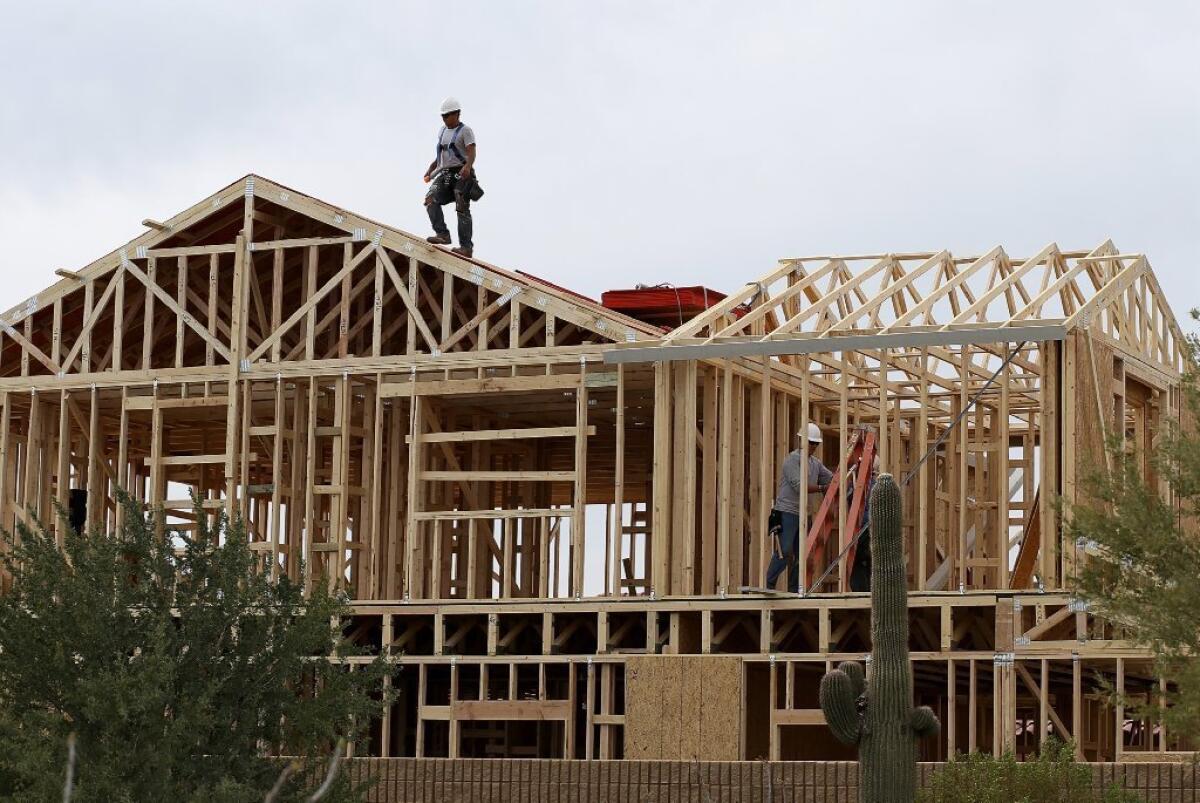After boom and bust, Sun Belt cities see glimmers again

- Share via
WASHINGTON -- With their economies and housing markets gaining strength, some of the nation’s biggest boom-to-bust cities in the Sun Belt are starting to become magnets again, attracting a growing number of people primarily from the northern part of the country.
Among the top 100 metro areas, Las Vegas, Phoenix and several in Florida led the nation in the population growth rate change between July 2011 and July 2012, according to Census Bureau data released Thursday and analyzed by Brookings Institution demographer William Frey.
Their growth was driven in large part by big net gains in domestic migration -- the movement of residents within the country. The Las Vegas area, after three years of negative domestic migration in the wake of its housing collapse, had 11,827 more U.S. residents move into the city than leave it last year.
Phoenix saw the biggest numerical increase in the exchange of residents with other parts of the country -- a net gain of 37,025, nearly 10 times the previous year. Houston, Atlanta, Dallas and Miami also showed sizable increases in net domestic migration.
Most domestic moves are made by younger people and tend to be driven by work and economic opportunities. Stronger population growth can lead to higher tax revenues and spur more building and development.
“We’re seeing a real glimmer for parts of the Sun Belt that were pretty much dead in the water during the recession,” Frey said.
Outside the Sun Belt, the San Francisco area held particular appeal last year: It attracted a net 13,827 residents in exchange with other parts of the country, nearly double 2011. Denver and Seattle also saw growth in their net domestic migration numbers last year.
Their gains meant losses for the biggest metro areas. The New York region’s net domestic loss of residents surged to 127,842 last year, a 28% jump from 2011.
Los Angeles, the second largest metro area, had a net outflow of 38,532 domestic residents last year, although that was down 11% from 2011. No. 3 Chicago’s net domestic loss also eased a little from 2011 but was still at 54,274 for last year.
The total population in each of these three cities continued to grow last year, thanks to births and a slight pickup in the number of residents moving in from other countries. Immigration rose last year as the effects of the Great Recession ebbed and job prospects improved in the U.S.
In sheer numerical population change last year, the Dallas-Fort Worth area led all cities with a gain of 131,879 residents. Houston was second with 125,185 more people, and the Los Angeles area third with 107,781.
A pair of Ohio cities, Cleveland and Youngstown, had the two largest overall population declines between July 2011 and July 2012, followed by two in New York, Syracuse and Buffalo.
Reflecting this divergence, the annual population growth rates for the Midwest and the Northeast regions slipped last year to 0.25% and 0.29% respectively. The pace of growth rose to 1.06% in the South and to 1.04% in the West.
ALSO:
Young adults are leaving the nest
L.A. population will be much older, more settled, study says
More to Read
Inside the business of entertainment
The Wide Shot brings you news, analysis and insights on everything from streaming wars to production — and what it all means for the future.
You may occasionally receive promotional content from the Los Angeles Times.











